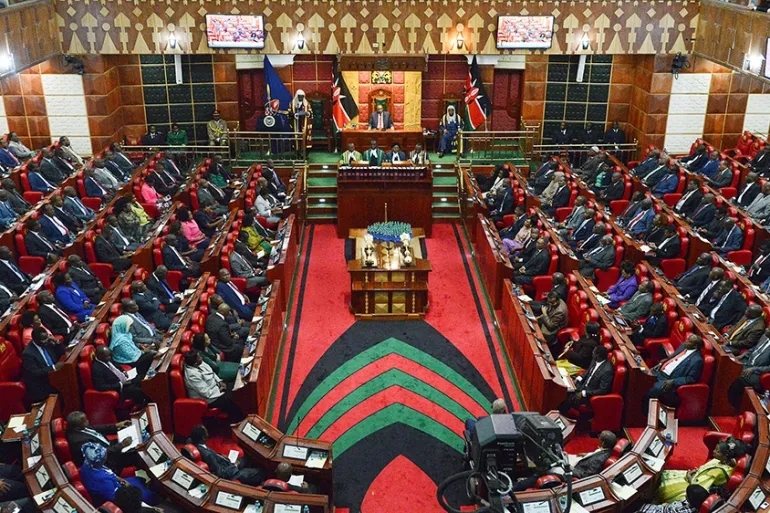Many decades ago, the healthcare of Kenyans suffered, with many unable to afford or access proper medical care and treatment. This dire situation touched the hearts of previous government visionary leaders, who embarked on a mission to create an institution that would revolutionise healthcare accessibility for Kenyans.
Thus, the National Hospital Insurance Fund was born, currently rebranded as the National Health Insurance Fund (NHIF). In its infancy, NHIF faced numerous challenges as the first institution in Kenya that would encourage Kenyans who have never heard of health insurance to register and pay, yet they are not sick.
However, the founders' undying commitment and the people's support enabled the Fund to grow into a powerful entity, providing a lifeline for Kenyans. As the years passed, the Fund’s impact on the nation's health became increasingly evident, as every Kenyan knows someone who has benefitted from NHIF, be it a relative, friend or neighbour.
The first and most crucial benefit of the Fund’s existence was that it granted all Kenyans access to essential healthcare services. With the burden of medical expenses lifted, most individuals and families are more enlightened and no longer hesitate to seek medical attention.
This early intervention has led to timely diagnoses and treatments, ultimately saving lives and preventing health conditions from worsening. All one needs to do is register with NHIF and pay promptly to benefit from the services offered.
The push is also for more and more members to continue paying and not to drop off after gaining from NHIF. In some rural areas, where medical facilities are scarce, the growing importance of NHIF has led to the growth of hospitals, increasing reach, and assisting the Fund by pushing the community to register to benefit.
These initiatives have become a ray of hope for people who had long suffered in silence, as they now have the chance to receive medical care without the burden of crippling debt that looms like a curse on their families.
Beyond the Fund's existence and the joint efforts of the Ministry of Health, NHIF and stakeholders, the nation has witnessed growth in accessibility to health coverage, thus, a healthier population.
Since 2015, NHIF expanded its services and has improved accessibility. The Fund works in an ecosystem with hospitals that have enabled, particularly government hospitals, to grow and have the equipment to treat patients.
Today the Fund works with a network of over 8,000 contracted hospitals, 70 per cent being government, 20 per cent private and about four per cent being faith-based facilities. Evident success stories are Nakuru Level 5 Hospital, Coast General Hospital and Moi Teaching and Referral Hospital, and mission hospitals like Our Lady of Lourdes in Mwea, which have great success stories on growth towards delivering Universal Health Coverage (UHC) to Kenyans.
The development of such hospitals has reduced the need for medical travel abroad and attracted foreign investment in the healthcare sector, boosting the nation's economy.
Moreover, NHIF is like a movement. Most Kenyans have always seen the Fund as a big brother because it has benefitted many Kenyans. Instead of harambees to pay medical bills, Kenyans are pushing for their friends and family to enrol in NHIF instead of large contributions for medical bills when one needs medical attention.
As the government strives to support those who cannot pay through UHC programmes for the vulnerable in society, citizens can join and support each other's well-being. Thus, a powerful display of collective responsibility toward the health of their people.
To show how much the Fund has grown, NHIF currently covers about 7 million households, with nearly 2 million indigent and vulnerable families identified and supported by the government through various programmes, including 1 million under the UHC scale-up programme.
About 250,000 are households under the subsidy programme for vulnerable children, orphans, the elderly and the severely disabled. Additionally, the Fund manages an expanded maternity programme for pregnant mothers dubbed the Linda Mama programme. This programme supports about 700,000 women yearly who enrol to access services in 6,000 contracted hospitals offering Linda Mama.
The thoughts shift to imagine if the Fund never existed and where all these beneficiaries mentioned above and more would access services. Kenyans should thus thank their forefathers for setting up the Fund and work towards ensuring it continues to exist for generations by ensuring everyone is onboarded for its sustainability.
On the other hand, Kenyans should positively feel the effects of NHIF that extend far beyond the realm of health, with improved healthcare access, quality services, a healthy workforce and increased efficiency. With this, Kenyan families will continue to thrive due to better health; children will always attend school, enhancing their opportunities and lowering the cycle of poverty.
In conclusion, NHIF has transformed Kenya's healthcare landscape, creating a nation where every citizen can benefit health-wise if they are registered. With 10 benefit packages offered at Sh500 a month, the Fund continues to provide affordable and accessible healthcare services. Thus, a guardian of health, saving lives and paving the way for a brighter future for Kenyans.
Head Corporate Communications & Marketing, NHIF
















